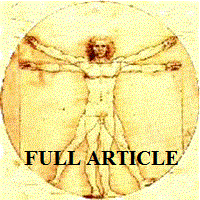JO VOL. 11 N. 1, Jan-Jun, 2019
Mandibular immunity and tissue reaction.
Authors:
I. Frydas1, E. Toniato, S. Martinotti2, and P. Di Emidio3
Affiliations:
1Laboratory of Environmental Engineering, Department of Chemical Engineering Aristotelian University of Thessaloniki, Greece
2Scienze Mediche Orali e Biotecnologiche, University of Chieti, Chieti, Italy
3Department of Neurosurgery and Maxillofacial Surgery, “G. Mazzini” Hospital, Teramo, Italy
Key words: mandibular, immunity, reconstruction, inflammation
Mandibular immunity and tissue reaction are very important in the reconstruction of the jaw. The reconstruction of the mandible after neoplastic and chronic inflammatory diseases certainly presents problems of biocompatibility of the material used and therefore can give undesired immune reactions. In this paper we report some considerations on this subject.
Patients with mandibular osteonecrosis may be affected by infections, inflammation and tissue degeneration (1-2). Therefore, maxillofacial bone destruction can result in osteonecrosis which can be due to various factors including drugs, agents that inhibit angiogenesis and inhibitors of protein synthesis which can alter the function of osteoclasts (3-4). Inflammations and/or infections, immunodeficiency and vitamin D deficiency, are elements that alter the physiology of the jaw bone, and participate in these degenerative processes (5). In these cases the therapy has not yet been established and is therefore difficult and mostly ineffective (6). Drugs that act on the inhibition of osteonecrosis, on infections and inflammation are often used (7).
The reconstruction of the mandibular bone, after osteonecrosis, is increasingly studied at an experimental level (8). Nowadays, many materials experimentally implanted in the jaws do not give relevant inflammatory responses and this opens up new therapeutic hopes (9). In some cases, during bone reconstruction, mild inflammation may occur due to activation of immune cells (10). For example, various types of phosphate cement implanted in tissues and in bone tissue give rise to the formation of mononucleate cells and fibrosis, with an increase in hydroxyapatite crystals, a dynamic process linked to the time of implantation (11). A histological analysis shows cement fixation and functional bone formation (12). The cement is well-tolerated by the bone tissue, and less so by the soft tissues (13). Thus, the new bone formation can be generated by elements such as calcium phosphate and hydroxyapatite crystals, with new vessel formation and new scaffolding (14).
The new bone tissue, approximately 35%, is gradually reshaped in well-functioning lamellar bone, demonstrating the effectiveness of the method (15). In fact the, new bone formation allows to restore the mandibular function even if the effect is partial (16).
The study of murine mesenchymal cells from the murine mandibular bone has allowed great progress in the area of tissue regeneration (17). However, the activation of immune cells compromises the development and expansion of mesenchymal stem cells that actively participate in the body’s immunity (18).
REFERENCES
- Khan AA, Morrison A, Hanley DA, et al. Diagnosis and management of osteonecrosis of the jaw: a systematic review and international consensus. J Bone Miner Res 2015; 30(1):3-23. doi: 10.1002/jbmr.2405.
- Akashi M, Kusumoto J, Takeda D, Shigeta T, Hasegawa T, Komori T. A literature review of perioperative antibiotic administration in surgery for medication-related osteonecrosis of the jaw. Oral Maxillofac Surg 2018; 2 2(4):369-78.
- Beth-Tasdogan NH, Mayer B, Hussein H, Zolk O. Interventions for managing medication-related osteonecrosis of the jaw. Cochrane Database Syst Rev 2017; 10:CD012432.
- Rosella D, Papi P, Giardino R, Cicalini E, Piccoli L, Pompa G. Medication-related osteonecrosis of the jaw: Clinical and practical guidelines. J Int Soc Prev Community Dent. 2016; 6(2):97-104.
- Saxén L. Juvenile periodontitis. J Clin Periodontol 1980; 7(1):1-19. Review.
- Aminoshariae A, Kulild JC, Mickel A, Fouad AF. association between systemic diseases and endodontic outcome: a systematic review. J Endod 2017; 43(4):514-519.
- Endo Y, Kumamoto H, Nakamura M, et al. Underlying mechanisms and therapeutic strategies for bisphosphonate-related osteonecrosis of the jaw (BRONJ). Biol Pharm Bull 2017; 40(6):739-50.
- Neto T, Horta R, Balhau R, Coelho L, Silva P, Correia-Sá I, Silva Á. Resection and microvascular reconstruction of bisphosphonate-related osteonecrosis of the jaw: The role of microvascular reconstruction. Head Neck 2016; 38(8):1278-85.
- Eppell SJ, Tong W, McMasters J, Soenjaya Y, Barbu AM, Ko A, Baskin JZ. minor review: an overview of a synthetic nanophase bone Materials (Basel) 2018; 11(9).
- Weitzmann MN. T-cells and B-cells in osteoporosis. Curr Opin Endocrinol Diabetes Obes 2014; 21(6):461-67.
- Kurashina K, Kurita H, Hirano M, Kotani A, Klein CP, de Groot K. In vivo study of calcium phosphate cements: implantation of an alpha-tricalcium phosphate/dicalcium phosphate dibasic/tetracalcium phosphate monoxide cement Biomaterials 1997; 18(7):539-43.
- Demir B, Yavuz U, Akpınar E, Özden E. A novel biological reconstruction of tibial bone defects arising after resection of tumors. Acta Orthop Traumatol Turc 2016; 50(2):248-54.
- Hardouin P, Grados F, Cotten A, Cortet B. Should percutaneous vertebroplasty be used to treat osteoporotic fractures? An update. Joint Bone Spine 2001; 68(3):216-21.
- Wang X, Schröder HC, Müller WE. Biocalcite, a multifunctional inorganic polymer: Building block for calcareous sponge spicules and bioseed for the synthesis of calcium phosphate-based bone. Beilstein J Nanotechnol 2014; 5:610-21.
- Takahashi HE. Morphological analysis of bone dynamics and metabolic bone Histomorphometric concepts of bone remodeling and modeling. Clin Calcium 2011; 21(4):520-7.
- Bak M, Jacobson AS, Buchbinder D, Urken ML. Contemporary reconstruction of the mandible. Oral Oncol 2010; 46(2):71-6.
- Mendi A, Ulutürk H, Ataç MS, Yılmaz D. Stem Cells for the oromaxillofacial area: could they be a promising source for regeneration in dentistry? Adv Exp Med Biol 2019; 1144:101-21.
- Yamaza T, Ren G, Akiyama K, Chen C, Shi Y, Shi S. Mouse mandible contains distinctive mesenchymal stem cells. J Dent Res 2011; 90(3):317-24.



